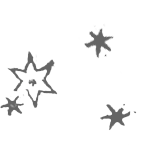Ancient
Exhibit items from the Ancient period.
Exhibit Items
|
Elements of Geometry, 1570 Euclid, (1570) Euclid was the starting point for any further study of optics and perspective. Optics combined geometry, experiment, vision and art. In the presentation of the geometrical solids, this copy retains the original pop-ups. |
 |
|
|
Astronomical Poem Hyginus, (1485) Greek writers compiled ancient stories of the constellations, often in poetic form, with memorable instructions for locating bright stars and zodiac constellations. Constellations of the zodiac contain the wandering courses of the planets and the annual path of the Sun. |
 |
|
| 1 |
The Divine Plato Plato, (1491) In his dialog entitled The Timaeus, Plato taught that the cosmos is constructed from regular geometrical figures known as the Pythagorean solids. Wherever one finds an emphasis upon mathematical demonstrations in science, one may credit Plato and the Pythagoreans. |
|
| 1 |
Elements of Geometry, 1482 Euclid, (1482) Euclid was the starting point for a mathematical approach to physics. This is the 1st printed edition. The beautiful woodcuts are hand-colored in this copy. The text of the first page was printed in both black and red ink. The geometrical diagrams were quite difficult to prepare. |
 |
| 1 |
Chinese lion, George and Cecilia McGhee Collection This Chinese lion is know as a Shi, or an imperial guardian lion. It was a symbol of protection and often placed in front of tombs, palaces, temples, and important homes |
|
| 1 |
Works of Hesiod Hesiod, (1559) In Works and Days, the poet Hesiod, a roughly contemporary of Homer, compiled guidelines for conducting life and forecasting the weather according to the stars. |
|
| 2 |
Works in Greek, vol. 1 Aristotle, (1495-1498) In a work entitled “On the Universe,” Aristotle argued that a 5th element, called ether or the quintessence, composes the celestial spheres that naturally rotate in place above the region where the four lower elements mix together beneath the Moon. |
|
| 2 |
Meteorology, 1556 Aristotle, (1556) In a discussion of optical effects of the atmosphere, Aristotle here addresses the formation of a halo around the Moon. This is one of the most interesting uses of mathematics in all of Aristotle’s writings. |
|
| 2 |
The Philosopher of China Confucius, (1687) Confucius lived in the early 5th century BCE, roughly contemporary with the Pythagoreans and Presocratic natural philosophers. Confucius taught: “Do not do to others what you do not want done to yourself,” an early version of the Golden Rule. |
|
| 2 |
Appearances of the Sky Aratus, (1547) Aratus, a Greek scientist and poet of the 3rd century B.C.E., offered practical advice for predicting the weather by learning to recognize the seasonal appearances of constellations. |
|
| 2 |
On Animals Aristotle, (1476) This is the first publication of Aristotle’s biological works. While Plato emphasized astronomy as the ennobling science, Aristotle insisted that biology, including the study of even the lowliest organisms, is beautiful to one who understands natural causes. |
|
| 3 |
Works in Greek, vol. 2 Aristotle, (1495-1498) In a work entitled “On the Universe,” Aristotle argued that a 5th element, called ether or the quintessence, composes the celestial spheres that naturally rotate in place above the region where the four lower elements mix together beneath the Moon. |
|
| 3 |
The Natural History of Plants, 1549 Theophrastus, (1549) What Aristotle did for animals, his student Theophrastus did for plants, making the study of plants an essential topic for ancient natural philosophers. Theophrastus sought not merely to describe the appearances of plants, but like his mentor Aristotle, to ascertain their causes. |
|
| 4 |
Works in Greek, vol 3 pt. A Aristotle, (1495-1498) In a work entitled “On the Universe,” Aristotle argued that a 5th element, called ether or the quintessence, composes the celestial spheres that naturally rotate in place above the region where the four lower elements mix together beneath the Moon. |
|
| 5 |
Works in Greek, vol 3 pt. B Aristotle, (1495-1498) In a work entitled “On the Universe,” Aristotle argued that a 5th element, called ether or the quintessence, composes the celestial spheres that naturally rotate in place above the region where the four lower elements mix together beneath the Moon. |
|
| 6 |
Works in Greek, vol. 4 Aristotle, (1495-1498) In a work entitled “On the Universe,” Aristotle argued that a 5th element, called ether or the quintessence, composes the celestial spheres that naturally rotate in place above the region where the four lower elements mix together beneath the Moon. |
|
| 6 |
Yin-Yang medallion (1960) Yin and yang, a recurring motif in traditional Chinese thought, express the idea of the interconnectedness of opposites. Phenomena which appear as dualities to us, such as darkness and light, or high and low tides, will turn out to be interdependent and profoundly related. |
|
| 7 |
On the Sizes and Distances of the Sun and Moon Samos, Aristarchus of (1572) Aristarchus, the Copernicus of antiquity, proposed in the 3rd century B.C.E. that the Sun lies at the center of the universe and that the Earth and other planets revolve around the Sun. |
|
| 7 |
Works in Greek, vol. 5 Aristotle, (1495-1498) In a work entitled “On the Universe,” Aristotle argued that a 5th element, called ether or the quintessence, composes the celestial spheres that naturally rotate in place above the region where the four lower elements mix together beneath the Moon. |
|
| 7 |
Works, Archimedes Archimedes, (1543) Archimedes (d. 212 B.C.) developed the law of the lever with his Treatise on the Balance. He contributed to arithmetic by devising methods for expressing extremely large numbers. He deduced many new geometrical theorems on spheres, cylinders, circles and spirals. |
 |
| 8 |
On Conic Sections Apollonius, (1710) Apollonius (3rd century B.C.E.) examined the properties of conic sections; namely, the: • circle (cuts a cone horizontally, perpendicularly to the axis of the cone) • ellipse (cuts a cone to make a closed curve) • parabola (cuts a cone parallel to a side of the cone) • hyperbola (cuts a cone in... |
|
| 12 |
Aristotle’s Masterpiece , (1788) Family medical handbook: Works entitled “Aristotle’s Masterpiece” were family health guides, written in the vernacular, offering practical remedies and advice for life cycle care, sexual relations, prenatal care, birthing and midwifery, hygiene and health. |
 |





